Assessing the Allocation of Special Elderly Nursing Homes in Tokyo, Japan
Abstract
:1. Introduction
2. Materials and Methods
2.1. Study Area and Data Sources
2.2. Methods
2.2.1. A Parameter-Improved FCA
2.2.2. A Multivariate Linear Model
3. Results
3.1. Coefficient of Potential Demand of ER3-5 ()
3.2. Estimates by BPR Method, FCA, and PI-FCA at Spheres of Welfare and Ward
3.3. Estimates at Chome and Distribution of the Degree of BNIS
4. Discussion
5. Conclusions
Acknowledgments
Author Contributions
Conflicts of Interest
References
- Ihara, K. Japan’s Policies on Long-Term Care for the Aged: The Gold Plan and the Long-Term Care Insurance Program; International Longevity Centre, Japan External Trade Organization: New York, NY, USA, 1997. [Google Scholar]
- Japanese Nursing Association. Nursing for the Older People in Japan. 2013. Available online: https://www.nurse.or.jp/jna/english/pdf/info-01.pdf (accessed on 25 January 2017).
- Bureau of Social Welfare and Public Health. The Sixth Senior Citizen Health Welfare Program in Tokyo, 2015–2017. Available online: http://www.fukushihoken.metro.tokyo.jp/kourei/shisaku/koureisyakeikaku/06keikaku2729/index.html (accessed on 13 September 2016).
- Sector of Social Welfare and Public Health of Chuo. The Senior Citizen Health Welfare Program & Sixth Care Insurance Business Plan, 2015–2017. Available online: http://www.city.chuo.lg.jp/smph/kusei/keikaku/sonotanokeikaku/koureisha-keikaku.html (accessed on 13 October 2016).
- Mitchell, O.S.; Piggott, J.; Shimizutani, S. Aged-care support in Japan: Perspectives and challenges. NBER Working Paper No. 10882; National Bureau for Economic Research: Cambridge, MA, USA, 2004; pp. 7–18. [Google Scholar]
- Organization for Economic Cooperation and Development. Japan Highlights from a Good Life in Old Age? Monitoring and Improving Quality in Long-Term Care; OECD, European Commission, 2013. Available online: https://www.oecd.org/els/health-systems/Japan-OECD-EC-Good-Time-in-Old-Age.pdf (accessed on 25 January 2017).
- Wan, N.; Zhan, F.B.; Zou, B.; Chow, E. A relative spatial access assessment approach for analyzing potential spatial access to colorectal cancer services in Texas. Appl. Geogr. 2012, 32, 291–299. [Google Scholar] [CrossRef]
- Gu, W.; Wang, X.; McGregor, S.E. Optimization of preventive health care facility locations. Int. J. Health Geogr. 2010, 9, 1–16. [Google Scholar] [CrossRef] [PubMed]
- Yang, D.H.; Goerge, R.; Mullner, R. Comparing GIS-based methods of measuring spatial accessibility to health services. J. Med. Syst. 2006, 30, 23–32. [Google Scholar]
- Luo, W. Using a GIS-based floating catchment method to assess areas with shortage of physicians. Health Place 2004, 10, 1–11. [Google Scholar] [CrossRef]
- Cheng, G.; Zeng, X.; Duan, L.; Lu, X.; Sun, H.; Jiang, T.; Li, Y. Spatial difference analysis for accessibility to high level hospitals based on travel time in Shenzhen, China. Habitat Int. 2016, 53, 485–494. [Google Scholar] [CrossRef]
- Dai, D. Black residential segregation, disparities in spatial access to health care facilities, and late-stage breast cancer diagnosis in metropolitan Detroit. Health Place 2010, 16, 1038–1052. [Google Scholar] [CrossRef] [PubMed]
- Tao, Z.; Cheng, Y.; Dai, T.; Rosenberg, M.W. Spatial optimization of residential care facility locations in Beijing, China: Maximum equity in accessibility. Int. J. Health Geogr. 2014, 13, 33–43. [Google Scholar] [CrossRef]
- Luo, W.; Qi, Y. An enhanced two-step floating catchment area (E2SFCA) method for measuring spatial accessibility to primary care physicians. Health Place 2009, 15, 1100–1107. [Google Scholar] [CrossRef]
- Gupta, K.; Roy, A.; Luthra, K.; Maithani, S. GIS based analysis for assessing the accessibility at hierarchical levels of urban green spaces. Urban Forest. Urban Green. 2016, 18, 198–211. [Google Scholar] [CrossRef]
- Higgs, G.; Langford, M.; Norman, P. Accessibility to sport facilities in Wales: A GIS-based analysis of socioeconomic variations in provision. Geoforum 2015, 62, 105–120. [Google Scholar]
- Cutumisu, N.; Spence, J.C. Sport fields as potential catalysts for physical activity in the neighbourhood. Int. J. Environ. Res. Public Health 2012, 9, 294–314. [Google Scholar] [CrossRef] [PubMed]
- Ding, Q.X.; Zhu, L.X.; Luo, J. Analysing spatial accessibility to residential care facilities in Wuhan. Hum. Geogr. 2016, 2, 36–42. (In Chinese) [Google Scholar]
- Cheng, Y.; Rosenberg, M.W.; Wang, W.; Yang, L.; Li, H. Access to residential care in Beijing, China: Making the decision to relocate to a residential care facility. Ageing Soc. 2011, 32, 1277–1299. [Google Scholar] [CrossRef]
- La Rosa, D. Accessibility to greenspaces: GIS based indicators for sustainable planning in a dense urban context. Ecol. Indic. 2014, 42, 122–134. [Google Scholar] [CrossRef]
- Simizutani, S.; Inakura, N. Japan’s public long-term care insurance and the financial condition of insurers: Evidence from municipality-level data. Gov. Audit. Rev. 2007, 14, 27–40. [Google Scholar]
- Bailey, T.C.; Gatrell, A.C. Interactive Spatial Data Analysis; Longman Scientific Technical: Harlow, UK, 1995. [Google Scholar]
- Wang, F.; Minor, W.W. Where the jobs are: Employment access and crime patterns in Cleveland. Ann. Assoc. Am. Geogr. 2002, 92, 435–450. [Google Scholar] [CrossRef]
- Field, K. Measuring the need for primary health care: An index of relative disadvantage. Appl. Geogr. 2000, 20, 305–332. [Google Scholar] [CrossRef]
- Shen, Q. Location characteristics of inner-city neighborhoods and employment accessibility of low-income workers. Environ. Plan. B Plan. Des. 1998, 25, 345–365. [Google Scholar] [CrossRef]
- Joseph, A.E.; Bantock, P.R. Measuring potential physical accessibility to general practitioners in rural areas: A method and case study. Soc. Sci. Med. 1982, 16, 85–90. [Google Scholar] [CrossRef]
- Ministry of Land, Infrastructure, Transport and Tourism. Research on Regional Development of Aging Society. In Survey Report on Sustainable Community Development of Aging Society; Ministry of Land, Infrastructure, Transport and Tourism Press: Tokyo, Japan, 2005. Available online: http://www.mlit.go.jp/kokudokeikaku/souhatu/h17seika/4koureisyakai/04_12honpen5.pdf (accessed on 31 January 2017). (In Japanese)
- Fahui, W.; Wei, L. Assessing spatial and nonspatial factors for healthcare access: Towards an integrated approach to defining health professional shortage areas. Health Place 2005, 11, 131–146. [Google Scholar]
- Field, A. Discovering Statistics Using SPSS, 3rd ed.; Sage Publications: London, UK, 2009. [Google Scholar]
- Abdi, H. Principal component analysis. Comput. Stat. 2010, 2, 433–459. [Google Scholar] [CrossRef]
- Pavia, L.; Cavani, P.; Di Blasi, M.; Giordano, C. Smartphone addiction inventory (SPAI): Psychometric properties and confirmatory factor analysis. Comput. Hum. Behav. 2016, 63, 170–178. [Google Scholar] [CrossRef]
- Worley, B.; Powers, R. Multivariate analysis in metabolomics. Curr. Metabolomics 2013, 1, 92–107. [Google Scholar] [PubMed]
- Zhang, J.; Zhang, L.Y.; Du, M.; Zhang, W.; Huang, X.; Zhang, Y.Q.; Yang, Y.Y.; Zhang, J.M.; Deng, S.H.; Shen, F.; et al. Indentifying the major air pollutants base on factor and cluster analysis, a case study in 74 Chinese cities. Atmos. Environ. 2016, 144, 37–46. [Google Scholar] [CrossRef]
- Marzouk, M.; Elkadi, M. Estimating water treatment plants costs using factor analysis and artificial neural networks. J. Clean. Prod. 2016, 112, 4540–4549. [Google Scholar] [CrossRef]
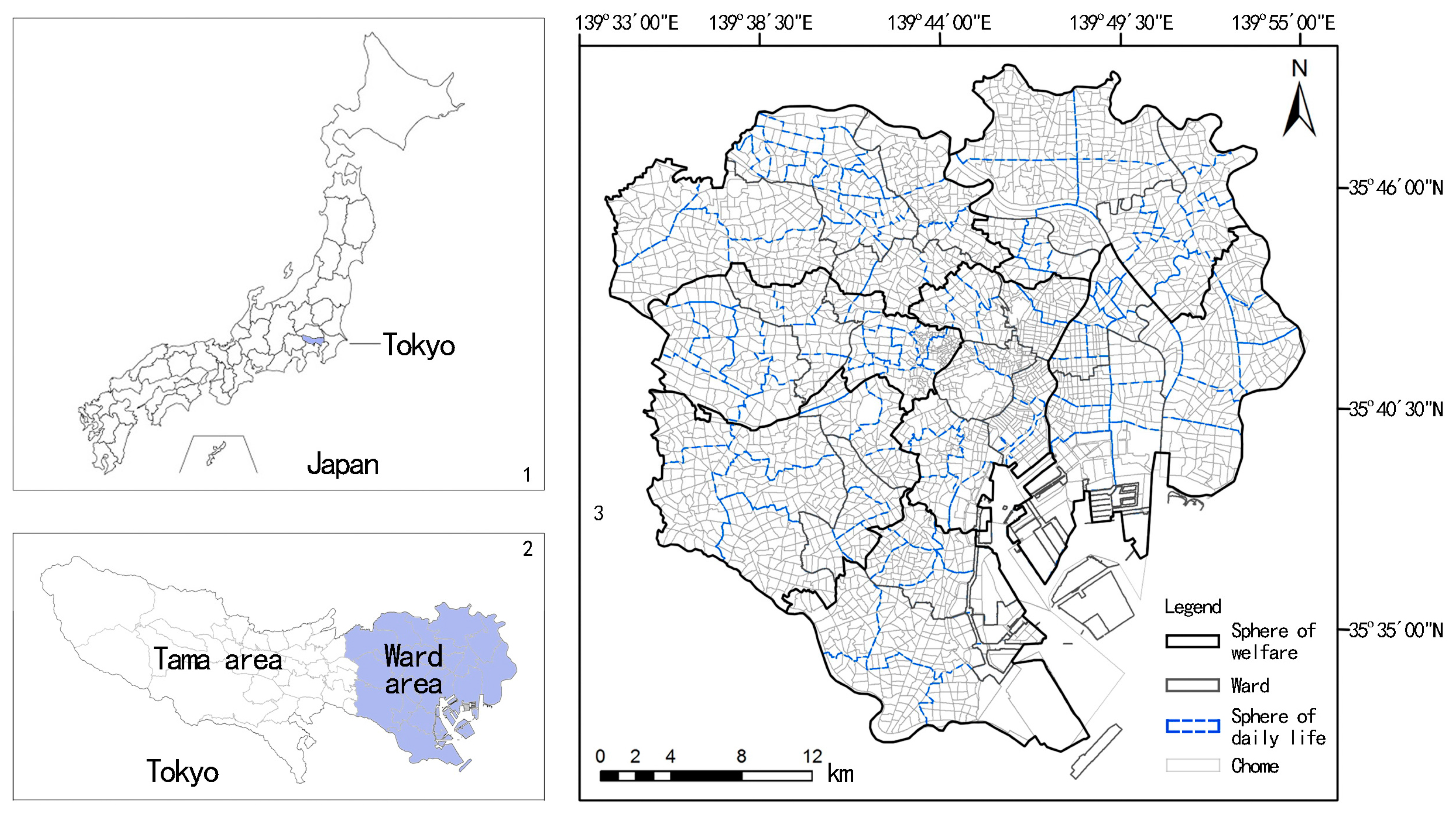

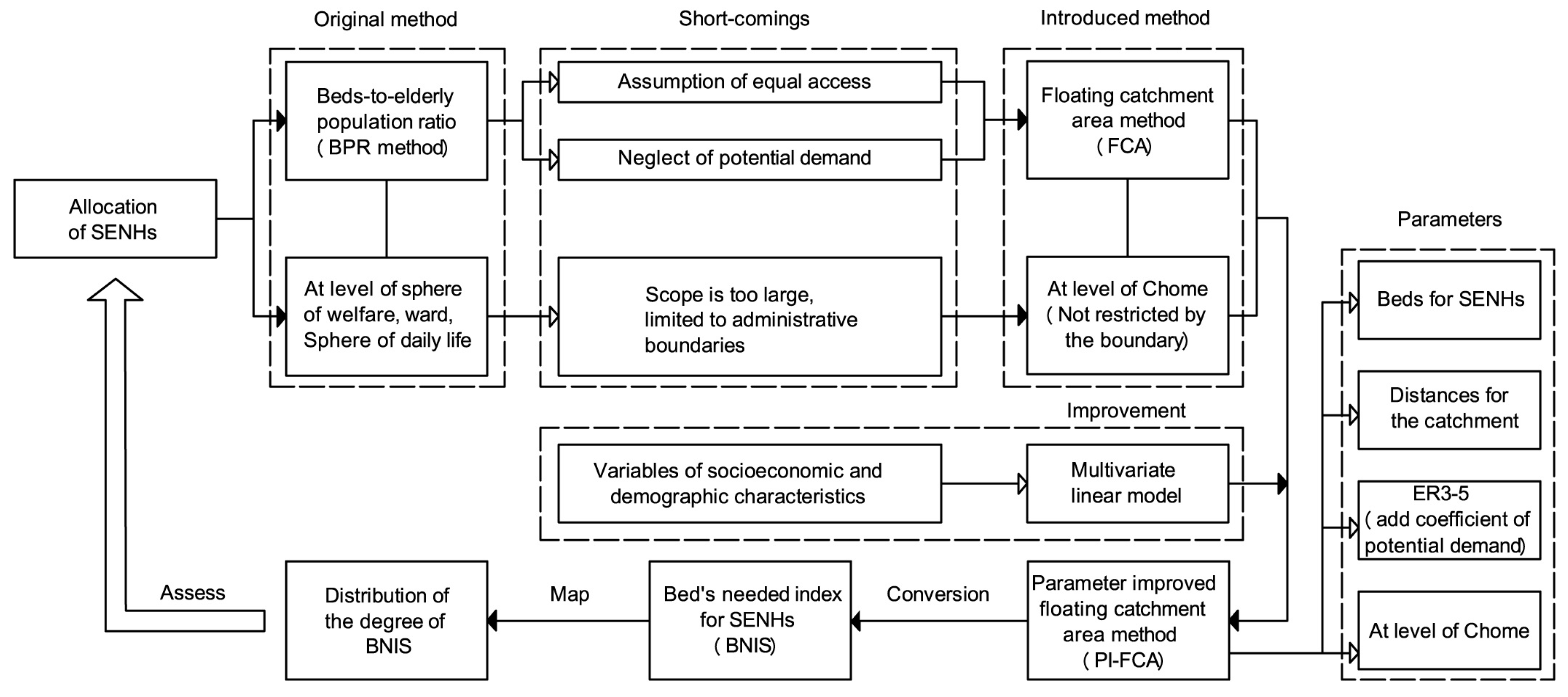
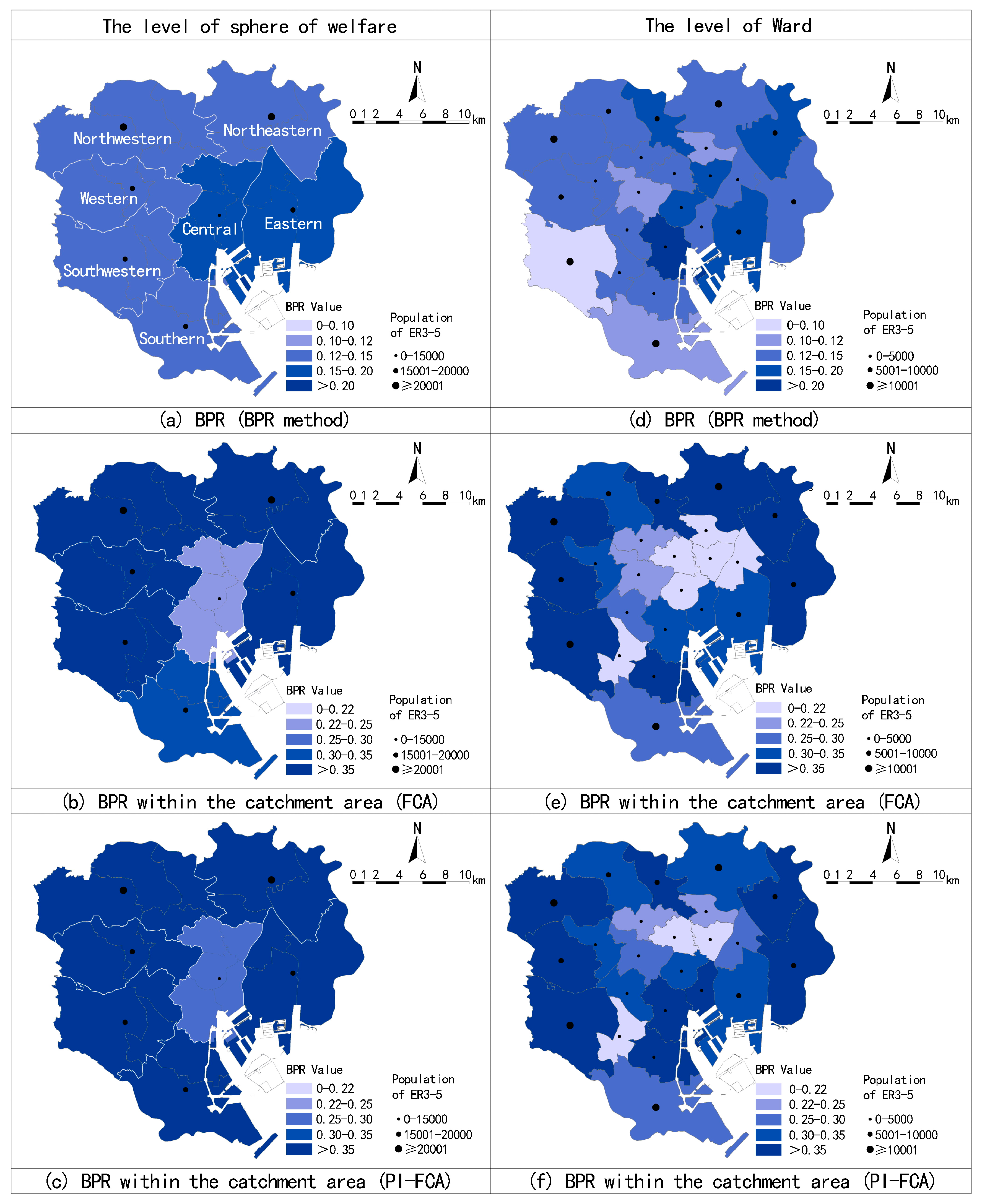
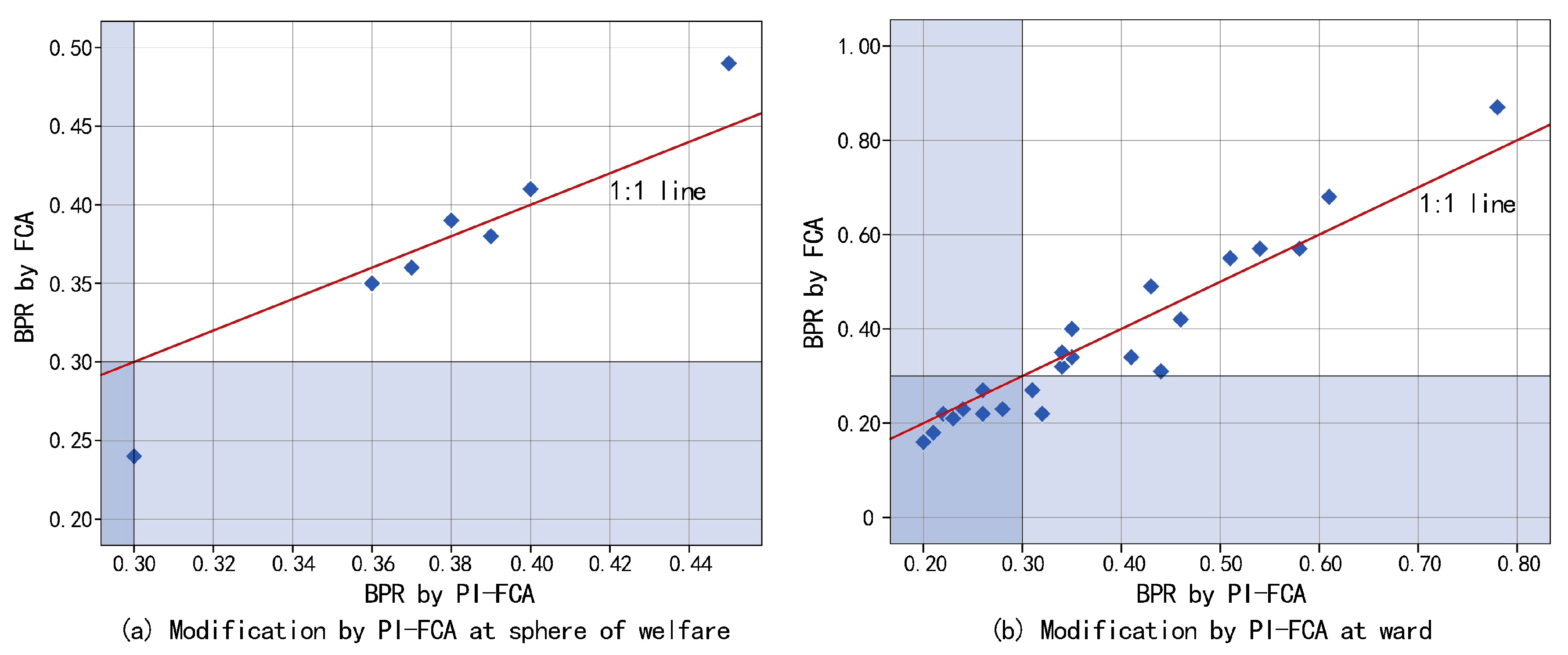
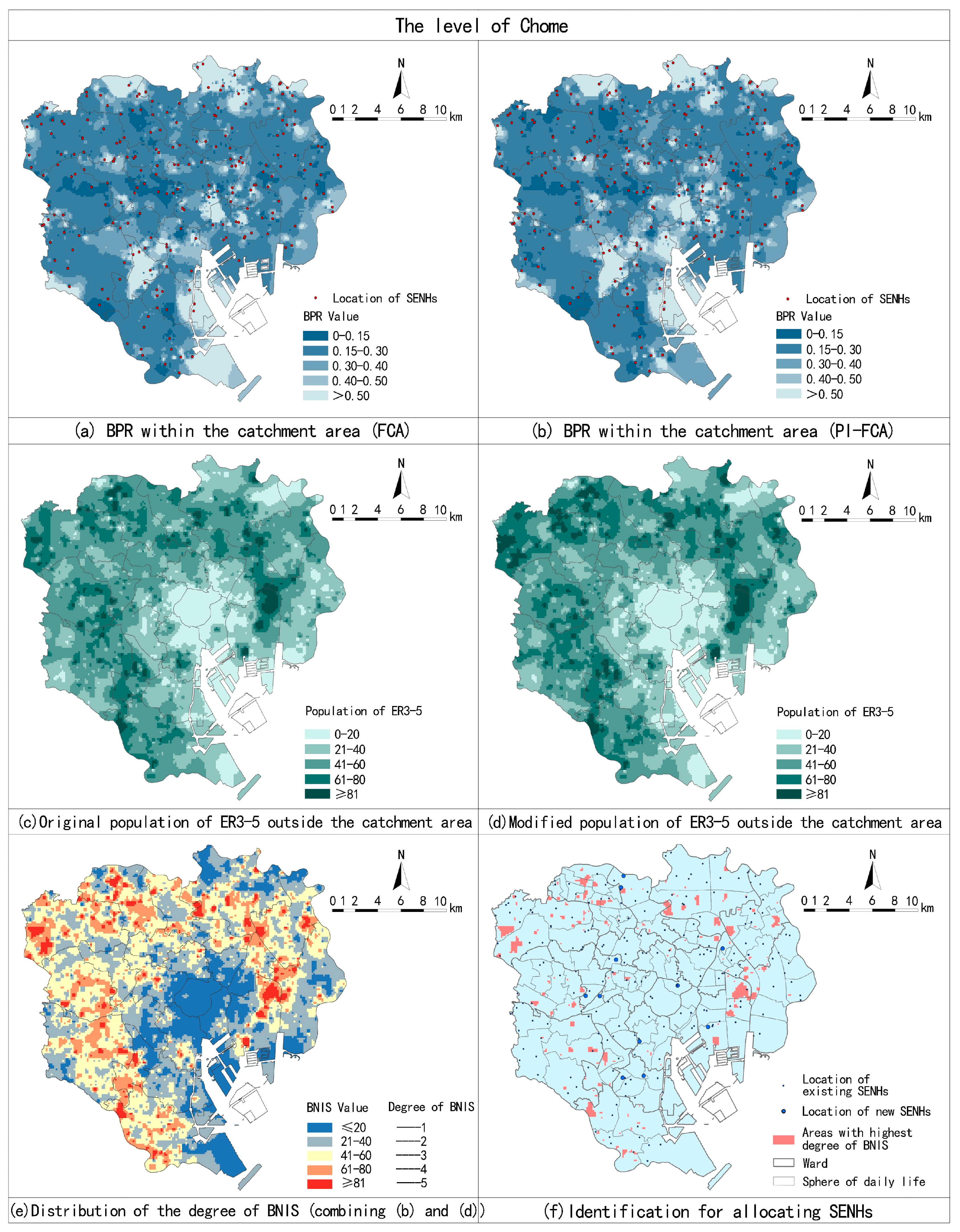


| Aspects | Variables | Categories | Correlation Coefficients |
|---|---|---|---|
| Family environment | Gender | Male | 0.378 |
| Female | −0.378 | ||
| Age | 65–70 | 0.632 ** | |
| 70–75 | 0.601 ** | ||
| 75–80 | 0.514 * | ||
| 80–85 | 0.703 ** | ||
| 85–90 | −0.249 | ||
| Over 90 | −0.668 | ||
| Education level | College or above | −0.468 | |
| Technical school | 0.190 | ||
| High school or below | 0.410 | ||
| Family structure | Live alone | −0.488 | |
| Elderly group | 0.505 * | ||
| Live with others | 0.345 | ||
| Dwelling condition | House type | Private housing | 0.291 |
| Private leasing | −0.334 | ||
| Public housing | 0.430 * | ||
| Issued housing | −0.456 | ||
| Others | −0.282 | ||
| House floor | 1–2 floor | 0.509 * | |
| 3–5 floor | 0.550 ** | ||
| 6–11 floor | −0.554 | ||
| >11 floor | −0.487 | ||
| Living space | ≤29 m2 | −0.453 | |
| 30–49m2 | −0.238 | ||
| 50–69 m2 | 0.189 | ||
| 70–99 m2 | 0.508 * | ||
| 100–149 m2 | 0.495 * | ||
| ≥150 m2 | 0.215 |
| Name of Ward | Population of the Elderly Who Require Care Levels 3–5 (-) | Value | Name of Ward | Population of the ER3-5 | Value |
|---|---|---|---|---|---|
| Chiyoda-ku | 817 | 0.68 | Shibuya-ku | 2641 | 0.88 |
| Chuo-ku | 1636 | 0.71 | Nakano-ku | 4176 | 0.96 |
| Minato-ku | 3126 | 0.82 | Suginami-ku | 7757 | 1.05 |
| Shinjuku-ku | 4245 | 0.83 | Toshima-ku | 4210 | 0.94 |
| Bunkyo-ku | 3010 | 0.85 | Kita-ku | 5616 | 0.98 |
| Taito-ku | 2887 | 0.81 | Arakawa-ku | 3053 | 0.92 |
| Sumida-ku | 3667 | 0.85 | Itabashi-ku | 8003 | 1.03 |
| Koto-ku | 6055 | 0.94 | Nerima-ku | 10,812 | 1.15 |
| Shinagawa-ku | 4344 | 0.91 | Adachi-ku | 11,572 | 1.14 |
| Meguro-ku | 3859 | 1.02 | Katsushika-ku | 7705 | 1.11 |
| Ota-ku | 10,712 | 1.02 | Edogawa-ku | 7464 | 1.07 |
| Setagaya-ku | 13,304 | 1.11 |
© 2017 by the authors. Licensee MDPI, Basel, Switzerland. This article is an open access article distributed under the terms and conditions of the Creative Commons Attribution (CC BY) license (http://creativecommons.org/licenses/by/4.0/).
Share and Cite
You, N.; Shen, Z.; Nishino, T. Assessing the Allocation of Special Elderly Nursing Homes in Tokyo, Japan. Int. J. Environ. Res. Public Health 2017, 14, 1102. https://doi.org/10.3390/ijerph14101102
You N, Shen Z, Nishino T. Assessing the Allocation of Special Elderly Nursing Homes in Tokyo, Japan. International Journal of Environmental Research and Public Health. 2017; 14(10):1102. https://doi.org/10.3390/ijerph14101102
Chicago/Turabian StyleYou, Ninglong, Zhenjiang Shen, and Tatsuya Nishino. 2017. "Assessing the Allocation of Special Elderly Nursing Homes in Tokyo, Japan" International Journal of Environmental Research and Public Health 14, no. 10: 1102. https://doi.org/10.3390/ijerph14101102




